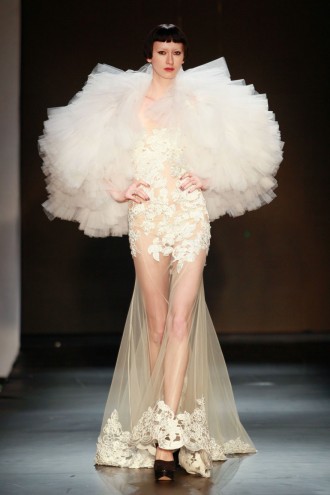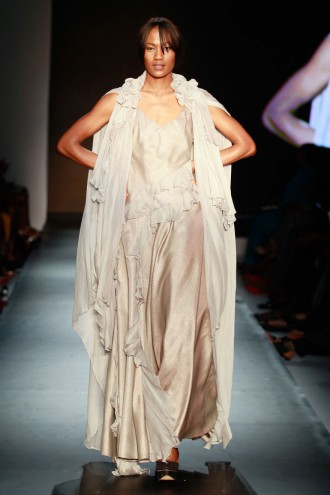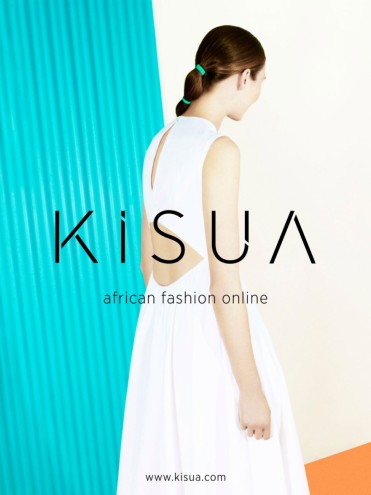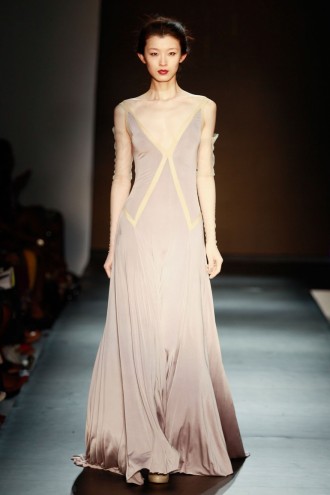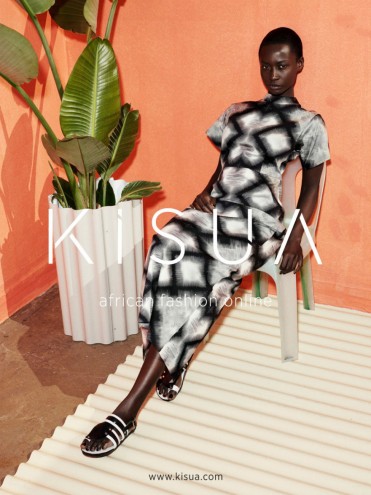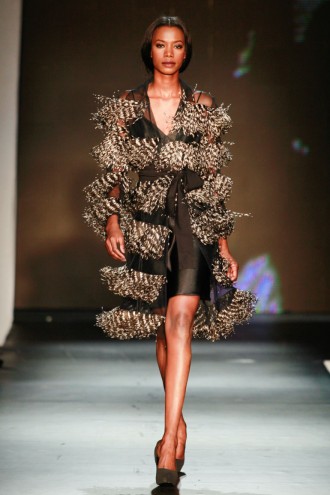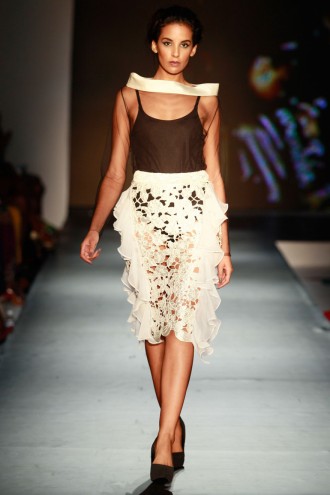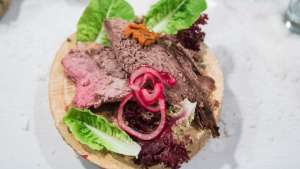From the Series
With the growing number of fashion weeks in Sub-Saharan Africa comes the launch last month in Johannesburg of the continent’s first fashion e-commerce site that seeks “to take people through the different textures of African design with each purchase.”
With 10 designers from four countries on the continent creating ready-to-wear contemporary capsule collections, the creators of Kisua hope to capitalise globally on what is evidently a growing interest in African fashion – if the number of local fashion weeks is any indicator.
A Ghanaian named Samuel Mensah, the former Africa director for a global investment firm, founded Kisua. Considering the lack of an established infrastructure in Africa to support the production and distribution costs of running a global label, providing that financial backing to the designers he and his team scouted from Nigeria, Kenya, Ghana and the Democratic Republic of Congo was always going to be a key function of the business.
“We recognised that although there is a lot of creative talent on the continent, there are many obstacles which prevent designers from going on to access international markets,” Mensah said. “What we aim to do is provide great quality garments at the same time as giving designers the means to be seen and heard, and the chance to make money too. We provide a commercial platform that helps them grow, and open doors for them that may otherwise remain closed”.
Allen Leroux, the chief executive officer and academic director of Fedisa, a South African fashion tertiary educational institution and the only Cape-based fashion institute registered to grant a degree, said that at a recent private equity conference he attended in Mauritius, it was clear that Africa with its exploding youth population demographic is seen as the next growth continent.
“These new consumers are driving the market for consumer brands and are becoming more and more discerning. It thus follows logically that fashion is going to see a huge resurgence of interest among this group,” he said. The rise of multi-country fashion weeks was a natural consequence to expose emerging designers and established fashion brands as well as to access and educate the new consumer into “the religion of global fashion”, he said.
According to an article entitled “The Growing Monopolisation of Fashion Weeks in Africa” on HauTeFashionAfrica, an online fashion design website, there might be greater interest in Africa and the fashion it produces, but without a regulatory fashion governing body across the continent, it becomes difficult to measure how this interest is benefitting Africa.
It suggests cutting down on the growing number of fashion weeks on the continent and replacing them with an annual fashion week across each region: northern, southern, eastern, and western and central Africa.
In South Africa alone there is Africa Fashion Week, Joburg Fashion Week, Cape Town Fashion Week, the Durban Fashion Fair and SA Fashion Week. All but the last two are produced by African Fashion International (AFI).
Outside of SA there is Ghana Fashion & Design Week, Arise Fashion Week and Lagos Fashion & Design Week in Nigeria. “The renowned factor of these AFI and Nigerian platforms now also mean most design brands are more keen to participate in South Africa and Nigeria than the rest of the continent. This therefore in turn shows that the growth of African fashion is happening mostly in these two countries,” it says in the article.
“With these two platforms setting their own rules, terms and handpicking the brands to showcase, it also means that we tend to see the same design brands across the different shows every year and allow less for us the public to discover new talents from across the continent. It is also evident that the participation fees for these shows due to their popularity and reputation can be unaffordable especially for these new emerging brands, therefore putting them at a higher disadvantage.”
Rob Spira of New York-based fashion business-consulting firm Launch Collective said his partner went to Nigeria Fashion Week for a client and the lines that participated were “nowhere near the calibre of brands we see in major fashion markets”.
“The brands were relatively unknown with small if any real sales and no global presence,” he said.
He believes fashion weeks have popped up all over the world, Africa included, as they serve to create buzz in the local markets, and people enjoy the experience of attending runway shows. It’s relatively inexpensive to put together a fashion week, he added, and the cost can often be offset by sponsors who want to align themselves with fashion (such as Mercedes-Benz with New York Fashion Week).
The only fashion weeks that get any real attention are the ones in NY, Paris, Milan and London.
SA Fashion Week, which launched in 1996, is South Africa’s longest standing industry event. Two seasonal events are held annually in Johannesburg to introduce the spring/summer and autumn/winter collections. Then there are the smaller shows in Africa: Swahili Fashion Week in Tanzania and the recently held Mozambique Fashion Week.
Well-known South African label KLûK CGDT has shown at all the major fashion weeks in SA as well as ones in Singapore, Sweden, Moscow, Paris and New York and – in Africa – in Nigeria.
Whereas most designers use fashion weeks as a preview of their next season’s range, for KLûK CGDT it’s an opportunity to “speculate on the collection and produce sizes ready to be sold the following day,” according to Malcolm Kluk. He said fashion weeks have always been a good marketing and sales tool for the label, giving him and partner Christiaan Gabriel du Toit direct contact with their customers and the press.
“Locally the organisers haven't quite got it right yet. There is too much politics involved. Sponsors want to be seen to support developing and young designers and so this is the focus of their attention. They forget that these young creatives do not employ staff and have a home industry as opposed to a business like ours that employs 20 staff and are responsible for 20 families directly and so many more indirectly through our outsourcing of production,” he said.
“Also a young designer needs experience and to learn the ropes before they can be successful in such a competitive industry. We have learned hard lessons along the way that have nearly cost us our business and the pressure on these inexperienced people is unfair.”
Spira said that fashion weeks create press around the time of the shows and that press tended to stop until the next fashion week rolled around. Japan was a good example of this. There are a number of world-class brands from Japan including Commes des Garçons, Yohji Yamamoto and Issey Miyake. And Tokyo Fashion Week still gets no real attention.
Japan is well respected worldwide for its fashion design despite the fact that their fashion week is not. This is because these brands create positive fashion buzz all year round and people can actually buy, wear and enjoy the clothes that are getting the press, Spira said.
“We find it interesting that cities and countries are investing in fashion weeks but not supporting the designers so they can become first class brands sold across the world. If South Africa (or any country or city) were to invest in creating brands that could sit in stores next to other top fashion lines, it would be far more effective than merely throwing together a fashion week,” Spira said.
The Cape Town Fashion Council (CTFC) is an industry association founded in 2006 to represent, develop, support and grow the Western Cape’s fashion sector, of which it has more than 900 members. The council partners fashion weeks in Namibia, Zimbabwe, Mozambique, Tanzania, Kenya and Mauritius – the latter country, according to council chief executive Bryan Ramkilawan, one with fantastic manufacturing capability but poor product development.
Ramkilawan said that fashion weeks needed to create a business platform rather than simply a creative one. They can’t be done “for the sake of a show”. A strong guest list is necessary with retail visibility that converts into retail space for the participating designers.
When he spoke to Design Indaba he was en route to Mozambique Fashion Week – an event he said had gotten better every year he’d attended, both for its staging and the quality of the product. Zimbabwe was enjoying big growth in its fashion sector too, he added. Many Zimbabwean designers trained in South Africa and then returned home.
The customer and selling garments is what it’s all about and this tends to be forgotten a lot, Kluk echoed. Albeit important, too much attention is placed on getting press, he added.
Leroux said with international brands continuing to be highly desirable in South Africa, the multitude of local fashion weeks created a platform for what we do, rather than our acting as a mere shop front for what the US, Europe and China are doing.
“There are dangers, however, when a small country like South Africa has three fashion weeks, and one must begin to worry whether its about the fashion weeks or the fashion. The costs associated with producing several different collections per year weigh heavily on designers, with the result that we are not showing the best of the country in each city. The result then is that fashion weeks begin to erode their own purpose. To be viable they may include collections that should be nowhere near a runway, let alone a premiere showcase.”
Unfortunately, as with everything these days, politics overshadow the primary goal and I am afraid that we will soon see the Klerksdorp, Patensie and Gobabis Fashion Weeks appear, Leroux said.
Kluk said that one of the greatest challenges in growing the local market was to trust that what we produce here is sometimes more exclusive and superior than international goods, and for that reason clothing needs to be aspirational as well as high quality.
“We believe Fashion Week is the platform to grow the market. It is social and glamorous, but designers have a responsibility to deliver and inspire,” he said.
There are no mills in Africa so the variety of fabrics and raw materials is limited, according to Ramkilawan. Perhaps that is one of the reasons that Kisua is not simply an e-commerce site but has created an African Designer Fund to support the designers it represents. A portion of every sale goes directly to the fund and royalties are then awarded to the designers. Kisua also funds all the designer collaborations so that the designers take no financial risk.
“It’s really exciting because nothing like this has been done before,” said Kisua’s creative director and former designer and stylist Danica Lepen. In 2004 Lepen co-founded and designed for popular label Black Coffee before becoming the creative director of South African high street brand Marion and Lindie in 2011.
“What we’re doing is showing people that African fashion is wearable and globally relevant. We want to break the mould – African design is not just wax patterns and beading.”

